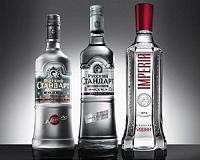 |
Los Angeles CA (SPX) Sep 14, 2010 An unusual wildflower that accumulates metals in its leaves has been found to use them as a kind of 'armor' against bacterial infection. Scientists from Oxford University have shown that when Alpine pennycress (Thlaspi caerulescens) plants accumulate metals in their leaves, they become resistant to attack by the bacterium Pseudomonas syringae pv. maculicola. They report their findings September 9 in the open-access journal PLoS Pathogens. Thlaspi, a small plant in the mustard family that grows on metal-rich soils scattered around Britain and Europe, such as the sites of former mine workings, is known to accumulate zinc, nickel and cadmium to very high concentrations in its leaves. " Our results demonstrate that these plants are exploiting their metal-rich environment to armor themselves against disease," said co-author Dr Gail Preston of Oxford University's Department of Plant Sciences, co-author of the report. "What we've found is a direct link between these high metal concentrations and resistance to bacterial infection." Co-author Helen Fones cultivated Thlaspi plants on progressively higher concentrations of zinc, nickel and cadmium and showed that all three metals were able to defend the plant against the pathogenic bacterium. By studying diverse strains of the bacterium, she was able to demonstrate a close relationship between the ability of bacteria to grow in the presence of high concentrations of metal and their ability to infect the plants. "Previously, it has been difficult to explain why Thlaspi plants should accumulate such high concentrations of potentially toxic metals," said co-author Professor Andrew Smith of Oxford's Department of Plant Sciences, co-supervisor of the research. "Our findings provide good evidence that, by accumulating metals, these plants benefit from enhanced protection against enemies such as pathogenic microorganisms and herbivores." The researchers also showed that bacteria surviving on Thlaspi plants on the site of a former lead-zinc mine in Wales had a higher tolerance for zinc than bacteria isolated from plants growing on normal soils. This indicates that both the plant and its pathogens show evidence of local adaptation to survival in metal-rich environments, and that pathogens can adapt to overcome plant defenses based on metals. "Heavy metals may be part of an evolutionary 'arms race' between plants and the microorganisms that try to colonize them," said Dr. Preston. Fones H, Davis CAR, Rico A, Fang F, Smith JAC, et al. (2010) Metal Hyperaccumulation Armors Plants against Disease. PLoS Pathog 6(9): e1001093. doi:10.1371/journal.ppat.1001093
Share This Article With Planet Earth
Related Links Public Library of Science Farming Today - Suppliers and Technology
 Russia limits vodka sales in fire-ravaged region
Russia limits vodka sales in fire-ravaged regionMoscow (AFP) Sept 13, 2010 Authorities in southern Russia said Monday they are limiting the sale of vodka in a region ravaged by forest fires in September, eager to keep people from drowning their sorrows in drink. Officials in the Volgograd region banned the sale of beverages containing more than 15 percent alcohol except for between 8:00 am and 9:00 am in five districts until a state of emergency is lifted, accordin ... read more |
|
| The content herein, unless otherwise known to be public domain, are Copyright 1995-2010 - SpaceDaily. AFP and UPI Wire Stories are copyright Agence France-Presse and United Press International. ESA Portal Reports are copyright European Space Agency. All NASA sourced material is public domain. Additional copyrights may apply in whole or part to other bona fide parties. Advertising does not imply endorsement,agreement or approval of any opinions, statements or information provided by SpaceDaily on any Web page published or hosted by SpaceDaily. Privacy Statement |